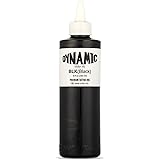The journey through various lettering styles, as showcased in a series like “Day 14 of 30 easy fonts,” underscores the profound value of structured practice and skill acquisition. While the accompanying video demonstrates a particular italic hand lettering approach, emphasizing heavy pressure on downstrokes and light pressure on upstrokes, the underlying principles extend far beyond a single demonstration. This foundational technique is central to developing expressive and visually compelling script, a cornerstone for any serious calligrapher or lettering artist. Understanding these mechanics allows for nuanced control and elevated artistic output, transforming simple letterforms into sophisticated elements of design.
Mastering italic script involves a deliberate cultivation of precision, rhythm, and a deep appreciation for the historical evolution of letterforms. It’s not merely about mimicking shapes; it’s about internalizing the dynamic interplay between the hand, the tool, and the medium. The brown ink selection, for instance, in the video serves not just as a color choice but as a thoughtful consideration of how hue and opacity influence the perceived weight and presence of the script. This meticulous attention to detail is what separates casual sketching from intentional, refined lettering.
Deconstructing Italic Hand Lettering: Form and Function
Italic script, historically rooted in Renaissance cursive, offers a beautiful blend of legibility and elegance, characterized by its distinctive slant and flowing connections. Unlike pure Roman capitals, italic forms are designed for speed and fluidity, making them highly adaptable for both formal documents and contemporary artistic expressions. The inherent movement within italic letterforms creates a sense of dynamism, drawing the viewer’s eye across the composition. Understanding its evolution from a functional script to a celebrated art form provides a richer context for its application today.
Distinguishing between true italic and oblique is crucial for practitioners. True italics feature subtly redesigned letterforms, often with varying stroke widths and terminal treatments that are intrinsically adapted to the slant. Oblique, conversely, typically refers to a mechanically slanted version of a upright Roman font, where the letterforms themselves are not fundamentally altered. For italic hand lettering, we often delve into designs that echo the true italic’s organic flow, focusing on how the pen naturally moves to create these elegant shapes. The foundational structure of each letter — its ascenders, descenders, x-height, and baseline — must be consistently maintained even as the script leans.
The Foundational Principles of Italic Script
The beauty of italic script lies in its internal consistency and rhythmic quality. Each character, while distinct, harmonizes with its neighbors to form cohesive words and lines. Key elements to master include maintaining a uniform slant angle, ensuring consistent letter spacing (kerning) and word spacing, and achieving visual balance across the line. These aren’t merely aesthetic guidelines; they are structural necessities that ensure readability and impact. Neglecting these principles can result in a disjointed or amateurish appearance, undermining the inherent elegance of the script.
Furthermore, the subtle variations in counter-spaces, the negative areas within and between letters, contribute significantly to the overall aesthetic of italic script. A discerning eye for these details allows for adjustments that optimize visual rhythm and density. The ascenders and descenders, often terminating with graceful flourishes or simple serifs, add to the vertical dimension and visual interest of the script. Developing a keen awareness of these nuances elevates one’s ability to render italic hand lettering with professionalism and artistry, moving beyond mere replication to genuine creation.
Mastering Pressure Control: The Heart of Expressive Lettering
The instruction to apply heavy pressure on the downstroke and light pressure on the upstroke is a fundamental axiom in variable-width lettering, particularly pertinent to techniques like italic hand lettering. This dynamic modulation of pressure creates contrast, depth, and visual interest, mimicking the effect of traditional broad-edge pen calligraphy but often achieved with flexible pointed tools. Without this precise control, lettering can appear flat and uniform, lacking the vivacity that differentiated stroke weights impart. It’s the varying width of the strokes that gives script its distinctive character and rhythm.
Understanding the biomechanics behind pressure application is critical for consistency and preventing hand fatigue. Heavy pressure on downstrokes leverages the natural downward force of the hand, allowing the nib or brush tip to splay and create a thicker line. Conversely, light pressure on upstrokes requires a delicate touch, allowing the tool to glide with minimal resistance, forming a fine, elegant line. This push-pull dynamic is central to the dance of the pen across the page. Practicing controlled breathing and maintaining a relaxed grip can significantly enhance this delicate balance, ensuring smooth transitions between thick and thin.
Advanced Techniques for Stroke Variation
Beyond the basic downstroke/upstroke rule, mastering pressure control involves understanding how to manage pressure on curves, transitions, and specific letter components. For instance, the entry and exit strokes of a letter might require a gradual increase or decrease in pressure, rather than an abrupt change, to create a smooth, organic flow. Compound curves, such as those found in letters like ‘s’ or ‘r’, demand a nuanced application of pressure that transitions from thick to thin and back again within a single stroke. This level of finesse requires extensive practice and a deep sensory connection to your lettering tool.
Consideration must also be given to the speed of execution. A slower, more deliberate stroke often allows for greater control over pressure changes, resulting in cleaner line work. Conversely, a too-slow stroke can lead to ink pooling or uneven distribution. Finding the optimal pace that balances control with fluidity is a personal journey for every artist. Experimentation with different pen angles and hand positions also plays a vital role in discovering the most comfortable and effective approach for achieving superior stroke variation in your italic hand lettering.
The Art of Pen and Ink Selection for Italic Lettering
The choice of writing instrument and ink color, such as the “darker of these two browns” noted in the video, is far from arbitrary; it profoundly impacts the final aesthetic and tactile experience of italic hand lettering. A darker brown, for instance, offers a sophisticated, earthy alternative to black, providing warmth while maintaining excellent legibility and contrast against lighter papers. The specific hue can evoke different moods—a sepia tone might suggest an antique charm, while a rich chocolate brown offers a grounded, modern feel. Pigment quality, lightfastness, and archival properties are also crucial considerations for preserving the artwork.
For achieving varied line weights, the type of pen is paramount. Flexible brush pens, with their synthetic or natural bristles, are excellent for dynamic stroke variation, responding instantly to changes in pressure and angle. Pointed dip pens, paired with a flexible nib, offer unparalleled control over line thickness, allowing for extremely fine hair-lines and dramatically thick swells. Even certain felt-tip pens designed for calligraphic effects can simulate pressure sensitivity, albeit with less nuance. The interaction between the pen tip, the ink’s viscosity, and the paper’s texture creates a unique signature for each piece.
Optimizing Your Materials: Ink, Paper, and Environment
Beyond the pen and ink color, the choice of paper significantly influences the outcome of italic hand lettering. A smooth, bleed-resistant paper with adequate sizing (internal treatment that reduces absorbency) is essential for preventing feathering and ensuring crisp, clean lines. Papers with a slight tooth can offer greater control for some artists, while ultra-smooth surfaces allow the pen to glide effortlessly, suitable for rapid, fluid strokes. The absorbency rate of the paper will also affect how the ink spreads and dries, impacting overall stroke definition and color intensity.
Furthermore, ambient conditions such as humidity and temperature can affect ink drying times and paper behavior. A humid environment might cause ink to dry slower, risking smudges, while a very dry environment could lead to faster drying, potentially causing ink to skip if the pen flow isn’t consistent. Thoughtful material selection and environmental awareness contribute to a controlled and enjoyable lettering process. Experimenting with various combinations of pens, inks, and papers is crucial for discovering the optimal setup that aligns with your personal style and desired aesthetic.
Integrating Italic Lettering into Diverse Design Applications
The refined nature of italic hand lettering lends itself beautifully to a wide array of design applications, extending far beyond the pages of a journal. Its inherent elegance makes it a prime choice for formal invitations, certificates, and stationery, where a touch of sophistication is desired. In branding, a well-executed italic script can convey luxury, tradition, or bespoke craftsmanship, instantly elevating a brand’s perceived value. Designers often leverage italic forms to create logos and taglines that communicate a sense of heritage and artisanal quality, reflecting careful consideration in their composition.
Beyond traditional print media, italic lettering finds its place in digital design, providing an organic, handcrafted feel to websites, social media graphics, and animated sequences. The process of digitizing hand-lettered pieces, whether through high-resolution scanning or vectorization, allows these unique scripts to be scaled and manipulated without loss of quality. This hybrid approach—combining the warmth of hand lettering with the versatility of digital tools—opens up countless possibilities for creative expression and commercial application. Understanding how to adapt and integrate these skills across different platforms is key for the modern lettering artist.
Enhancing Visual Hierarchy and Impact
Within a larger design, italic script can be strategically employed to establish visual hierarchy and guide the viewer’s eye. Its distinctive slant and often more decorative nature naturally draw attention, making it ideal for highlighting headings, subheadings, or key phrases. When combined with upright, sans-serif, or slab-serif fonts, italic lettering provides a compelling contrast that adds depth and interest to the overall composition. This thoughtful juxtaposition ensures that important information stands out, while the design remains balanced and aesthetically pleasing.
For instance, in a bullet journal layout or a scrapbook, an italicized entry can effectively differentiate personal reflections from daily tasks, or emphasize a particularly poignant quote. In graphic design, a beautifully rendered italic phrase can serve as a central focal point, around which other design elements are arranged. The ability to articulate specific messages with varying degrees of visual emphasis using italic hand lettering transforms a simple text into an engaging visual narrative, making the content more accessible and memorable for the audience.











